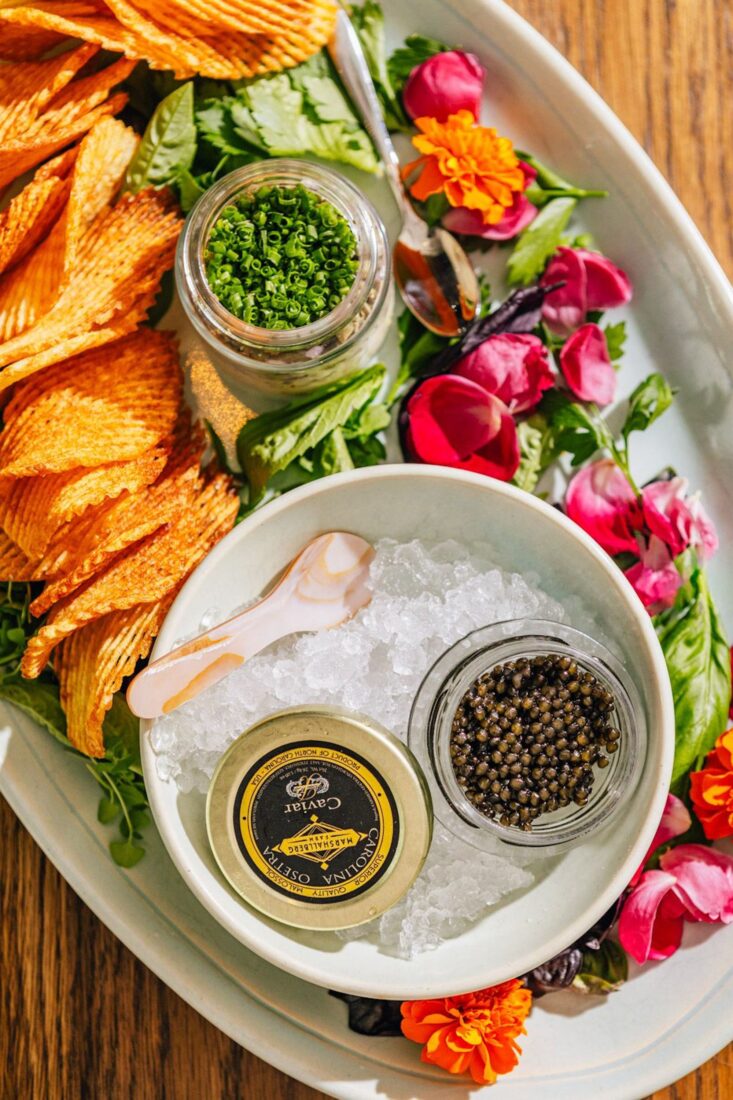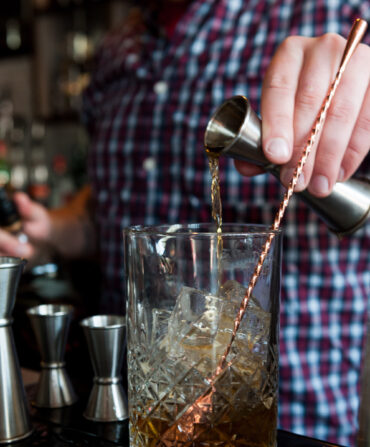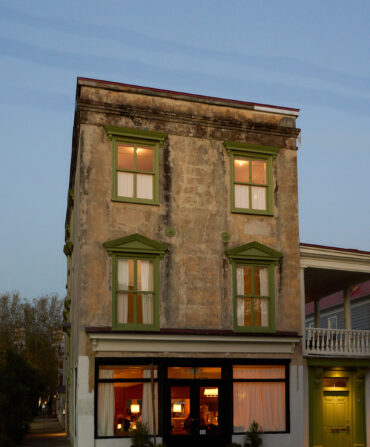The expensive delicacy that feels like a little get-your-joy-where-you-can, Gatsby-style treat has been making waves lately atop oysters, deviled eggs, and even potato chips. “Caviar is having a moment,” says Trudi Wagner, co-owner of Goat.Sheep.Cow. in Charleston, South Carolina. “We had a fully stocked caviar shelf, and in the week from Christmas to New Year’s, we completely sold out.” The upcoming Valentine’s Day holiday will likely be another popular time for fancy fish eggs: The shop stocks caviar tins alongside wine, cheese, tinned fish, and olives, and is just one of many Southern spots reporting a huge new interest in caviar.

Traditionally served with silver alongside tiny pancake-like blinis, caviar also often glistens atop oysters on the half shell, especially in the South. Dean Neff, the James Beard–nominated chef at Seabird in Wilmington, North Carolina, almost always has a caviar presence on his menu, and he loves to serve it with two other Southern staples: potato chips and deviled eggs.
“An easy way to make it fun and more accessible is to serve it with potato chips,” he says. “I suggest a good quality kettle chip with no added flavors, or even go one better and make your own waffle potato chip with a French mandolin. They’re surprisingly easy, and they will make it that much more special.”
With deviled eggs, he adds, “you’re still able to get the bite, the toothiness of caviar, and our eggs have the traditional accoutrements of capers, the crème fraîche, and fresh herbs with the creamy richness of the eggs. It’s hard not to love them.”

Navigating the waters of caviar can be overwhelming, especially when the industry’s most prized providers of it, osetra and beluga sturgeon, have been overfished in the wild. But many purveyors say the future is all about farmed fish, and Southern producers are among the country’s leaders of farmed caviar.
Nearly twenty years ago in little Smyrna, North Carolina, I.J. Won retired from a career teaching geophysics at NC State and opened the sturgeon-focused Marshallberg Farm. It’s now a top American caviar purveyor that’s ranked as a “Best Choice” for sustainability by the Monterey Bay Aquarium Seafood Watch. It operates on recirculating aquaculture system technology, which means that the farm isn’t dependent on an outside body of water.
“Good caviar shouldn’t be fishy,” says Lianne Won-Reburn, I.J.’s daughter. “Osetra is known for its mild, buttery flavor, and we pack it in the tin on harvest day, so the flavor is clean and crisp.”
The farm, which has a coastal facility in Smyrna as well as one in Lenoir, North Carolina, recycles 95 percent of its water, responsibly containing waste instead of releasing it into the environment (a common complaint about old-school aquaculture). Marshallberg Farm caviar pops up on menus from the Carolinas to New York City and counts Emeril Lagasse among its fans.
Farther south, Evans Farm in Pierson, Florida, raises three varieties of sturgeon and packages its caviars under the Anastasia Gold Caviar name. Gene and Marilyn Evans originally began farming cattle before getting into aquaculture with tilapia and striped bass. Then they moved on to the bigger sturgeon fish—which take years to mature to harvest for caviar—and now have second- and third-generation sturgeon on the farm.
For in-person caviar shopping, the epicenter has to be Marky’s Gourmet, whose flagship location opened in Miami in 1983. (They also operate stores in New York City and an online shop with overnight delivery.) In addition to selling gourmet items beyond caviar, the company farms caviar in Florida, too, and operates fine dining restaurants, including Marky’s Caviar Lounge in Davie.

Champagne is the classic pairing, and not just because of Robin Leach’s “champagne wishes and caviar dreams” television tagline of a generation ago. The wine’s crisp flavors and effervescence counterbalance the rich fattiness of the caviar, making each bite of caviar as complex as the first. And if that isn’t love, we don’t know what is.
Caviar 101
Details from the caviar expert Rod Browne Mitchell, owner of Browne Trading Co., which stocks farmed caviar and has a monthly caviar subscription:
• First things first: Any wild caviar export has been closed since 2005 by CITES (Convention for Trade in Endangered Species). The U.S. Fish and Wildlife Department monitors all imported caviar. Only purveyors with a CITES permit that assures the origin and species of the sturgeon are legitimate.
• Farm raised: The tin will usually detail the species, harvest date, and often a “best by” date.
• Freshness: Most purveyors recommend consuming caviar within the same week it arrives. Unopened, refrigerated caviar usually has a shelf life of four to six weeks.
• Fish species. Caviar is graded and priced by the type of sturgeon and its quality. While farm-raised is now the worldwide choice, there are wild-swimming varieties of the fish, including beluga, osetra, kaluga from China, and American white sturgeon caviar, native to California and the U.S. Pacific Northwest.








